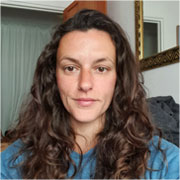Synthetic cathinones, commonly referred to as bath salts, are a group of substances used for both illicit and medicinal purposes. Bath salts can cause several side effects and health issues and have the potential to cause addiction and dependence.

What are bath salts?
Bath salts are a group of illicit substances, abused for their stimulant and euphoric effects. They are lab-made substances known as synthetic cathinones, designed to mimic the naturally occurring substance, cathinone, found in the khat plant. This class of drugs is also referred to as new psychoactive substances (NPS). [1]
Bath salts were initially developed as an alternative to other illicit substances, such as MDMA and cocaine, and cause similar effects to these drugs. They were initially marketed as ‘legal highs’ and labeled as ‘bath salts’ or ‘plant food’ to be sold legally. However, they have since been classified as Schedule I controlled substances and are illegal to purchase or use. [2]
Some synthetic cathinones, such as bath salts and flakka, are illicit substances. However, some synthetic cathinones are used legally and medicinally, such as bupropion. [3]
How are bath salts abused?
Bath salts are sold as a powder or in small crystals or rocks. They are often inhaled nasally (snorted), smoked, swallowed, or injected. [2]
Sometimes, stimulant drugs such as ecstasy, MDMA, or cocaine contain large amounts of bath salts, which are cheaper to produce and so can be sold for a higher profit. This can increase the risk of accidental overdose or severe side effects, particularly if the user is unaware of the drug's contents. [3]
Oral administration causes the onset of effects in 15-45 minutes, although snorting is reportedly much faster. These effects are felt for between two and four hours and it is common for users to then experience a strong desire to take repeated doses. [4]
Slang term for bath salts
‘Bath salts’ is the street name given to this type of drug due to the labeling it was initially sold under. Other terms by which it is referred include: [2]
- Plant food
- Bliss
- Meow meow
- Pure ivory
- Ivory wave
- White knight
- White lightning
- Flakka
- Monkey dust
Side effects of bath salts
Side effects of bath salts can vary from person to person and may depend on the amount, frequency, and administration method of the dose.
Common side effects
Common side effects of bath salts include: [2][4]
- Euphoria
- Increased energy
- Restlessness
- Poor sleep
- Insomnia
- Headaches
- Dizziness
- Confusion
- Blurry vision
- Mouth and jaw tension
- Dry mouth
- Reduced appetite
- Sweating
- Reckless or dangerous behaviors
- ‘Come down’ – low mood, insomnia, anxiety, and restlessness in the days following use
Severe side effects
In some cases, severe side effects can occur with the use of bath salts, particularly following heavy use. These can include: [1][2][3][4]
- Extreme mood and behavior changes, including anxiety, paranoia, and aggression
- Bleeding or damage in the nostrils (from snorting)
- Nausea and vomiting
- Stomach pain
- Hallucinations and delusions
- Dehydration
- Rapid or irregular heartbeat
- Overheating
- Chest pain
- Seizures or convulsions
- Shaking
Why are bath salts called the zombie drug?
In recent years, there have been reports of individuals using bath salts and committing acts of cannibalism, such as biting other people’s faces. These reports, along with others, suggest that bath salts cause a state of delirium and paranoia that leads people to commit severe acts of aggression toward others. [5][6]
These reported incidents have led the media to believe that the use of bath salts is responsible for these effects, dubbing these substances as the ‘zombie drug’. However, it has since been suggested that these speculations are incorrect or have been exaggerated. These incidents have occurred rarely and there is no evidence that bath salts were the cause. [6][7]
Symptoms of psychosis, such as hallucinations and paranoia, along with aggressive or violent behaviors have been seen to occur in individuals taking bath salts. ‘Zombie’ or flesh-eating behaviors, however, are believed to be simply media speculation. [4][7]
Can you overdose on bath salts?
Yes, it is possible to overdose on bath salts, particularly when taking a large dose. As this substance is a central nervous system (CNS) stimulant, overdose effects can include severe cardiovascular consequences, particularly when combined with other CNS stimulants. [4]
Signs of an overdose of bath salts include: [1][4]
- Rapid or irregular heartbeat
- Trouble breathing
- Severe agitation
- Delirium
- Aggression and violence
- Hallucinations
- High temperature
- Seizures
- Loss of consciousness
In the event of an overdose, call 911 immediately.
Are bath salts addictive?
Currently, there is limited information about individuals seeking treatment for bath salt dependence, so it is unclear precisely how addictive these substances are. [4]
However, evidence shows that bath salts impact dopamine release, which can reinforce use and lead to the development of physical dependence, therefore increasing the risk of addiction. Users also report strong urges to use repeated doses of bath salts, further indicating a high chance of dependence and addiction. [1]
Bath salts impact the levels of dopamine, serotonin, and norepinephrine, like other stimulant drugs such as cocaine and MDMA. This suggests that there is a comparable likelihood of addiction, dependence, and withdrawal symptoms, based on these similar neurotransmitter effects. [1][8]
Bath salt and synthetic cathinone treatment
People requiring treatment for bath salts or synthetic cathinone use may require professional support for reducing or stopping use. This may involve medications to help reduce the severe side effects of the drug, including agitation, aggression, and psychosis. Medications to help with this process can include antipsychotics and benzodiazepines. [3]
Although there is little data regarding treatment for bath salt use, the approach to treatment is likely to be similar to that of other substance use disorders. This can include: [8][9]
- Psychological support: Many people who use substances have underlying mental health issues, such as depression, anxiety, or trauma. It is also common for these individuals to engage in the harmful use of more than one type of substance. Psychotherapy, such as cognitive behavioral therapy (CBT), can help reduce addictive behaviors, treat underlying causes, manage cravings and triggers, and teach healthy coping strategies.
- Group support: Many people with a substance use disorder find it beneficial to engage in group support, such as Narcotics Anonymous or 12-step programs. This can provide a safe space to talk about drug-related experiences and concerns, give and receive advice, and form a sense of community and support.
- Inpatient and outpatient care: Inpatient and outpatient rehabilitation services can provide medicinal, psychological, and holistic approaches to managing substance use while monitoring and treating side effects or withdrawal symptoms that occur during treatment.
- Medication: Sometimes medications may be useful to help manage psychological or physical conditions that co-occur with substance use. This might include antidepressants or non-opioid pain relief.
- Physical health care: Substance use disorders can lead to or worsen physical health issues, such as diseases from shared implements, cardiovascular or respiratory difficulties, and untreated pain conditions. Receiving professional care can help manage these symptoms and may reduce physical health risks relating to drug use.


